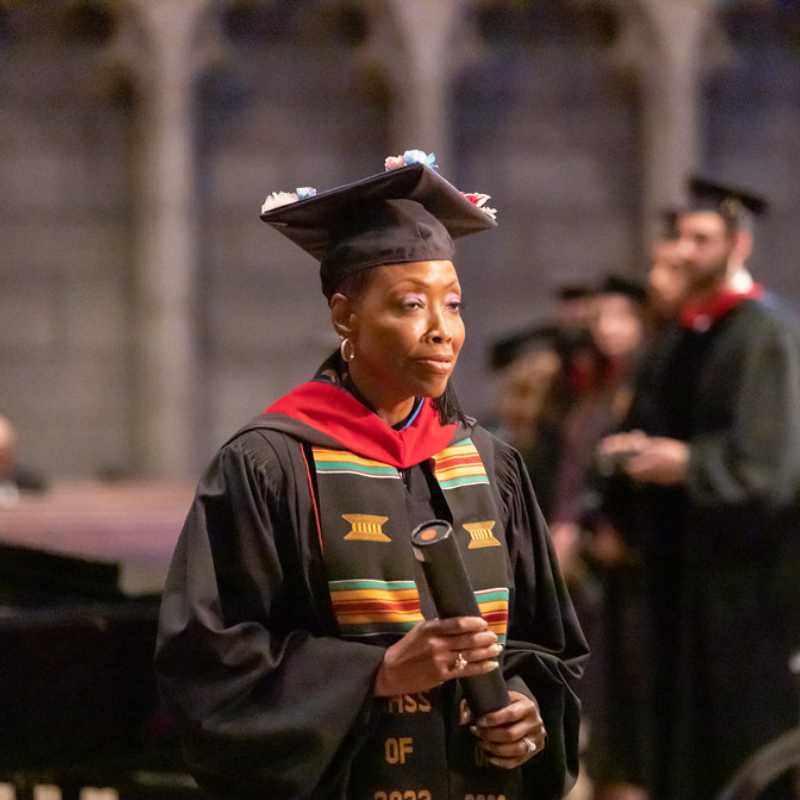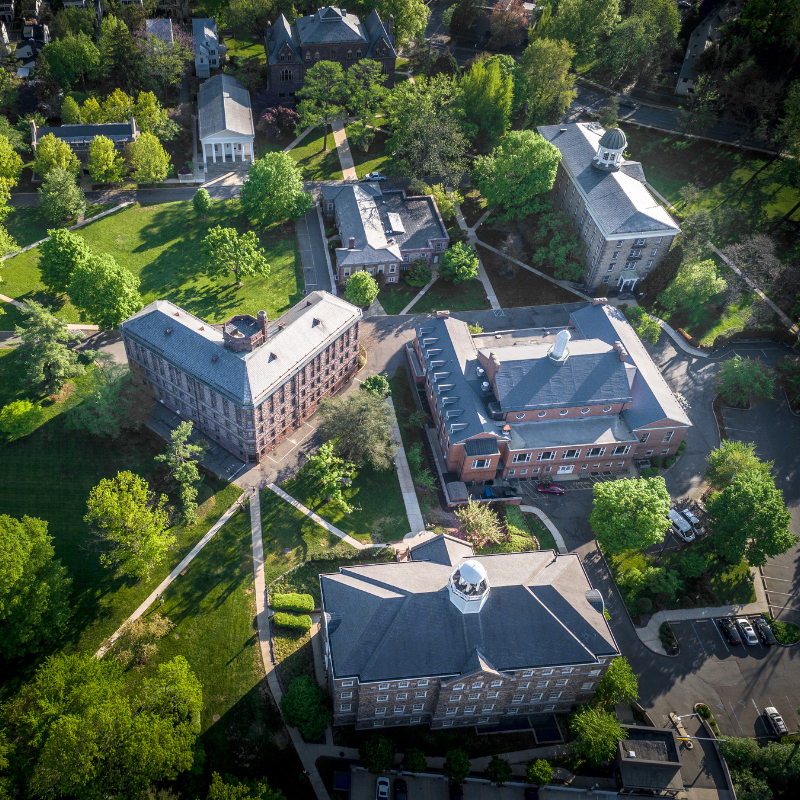Preaching Through the Lens
October 8, 2019 | Continuing Education, Public, The Thread

This past summer I spent a week in the national parks of the Canadian Rockies. Days revolved around hiking and cameras; evenings were spent downloading, evaluating, and tweaking photographs. Without fail, each day someone would make the same comment: “These pictures don’t even begin to do it justice.” And it’s true. Even with the best equipment, there’s no way to capture the grandeur of that magnificent corner of God’s creation. You’ve had the same experience yourselves – at the beach, watching a sunset, or snapping a photo of a newborn.
A picture can’t begin to do justice to the reality. And we shouldn’t expect it to. No matter how good it is, the photograph of a glacial lake at the end of a 5-mile hike will never be the lake or the hike itself. It’s simply a reminder of that place and that experience. The camera phone snapshot of the exuberant child on the playground is no substitute for swooping her up in your arms. The photograph is merely an image that points to something better.
That’s a lesson I hope I never forget. The photograph is not the thing. In preaching, the sermon is not the point. The glory of God is the point. As I continue to practice the craft of preaching, my hope and prayer is that I will always be pointing hearers to the reality of God’s good news rather than my words, no matter how well crafted they may be.
I fear sometimes that we preachers get so caught up creating sermons to enthrall or engage or entertain that we fail to point congregations to the Truth beyond the sermon, even (perhaps especially) when it’s not what they want to hear. The sermon is merely a vehicle to transport the faithful to God’s deep and abiding good news. The sermon is not the point.
Secondly, the lens makes all the difference.
A photographer friend recently introduced me to the world of macro photography, or ultra-intense close-ups. A macro lens requires the photographer to get within a few inches of the subject, determine the precise focal distance, and shoot carefully without disturbing the scene. I discovered that it demands close attention, a steady hand, and good knees. It should come with a warning “not for the faint of heart!”
But the results are stunning. Macro photography is not easy, but what it produces is radically different from anything you could get with a standard or wide-angle or even zoom lens. The yellow flower on the hillside becomes a work of art all its own, flaunting its fibers, leaves, and even the insects that inhabit it.
Macro lenses give me a view of the world I don’t often see. But it’s not always the view I need. Sometimes I need a wide angle to appreciate the bigger picture. Sometimes I need the telephoto perspective of one item surrounded by others. Sometimes I just need the standard view, so I can deal with everything in the frame around it.
No one of those viewpoints is better than any other. It’s the same with preaching: There are a variety of lenses through which we approach every text. Sometimes I find myself zooming in on a single word, and its Greek or Hebrew roots. Other times I may choose the wide-angle view to talk context. Sometimes I need the macro view of a certain preposition or turn of phrase. All are faithful approaches to any text. The lens makes all the difference.
Finally, there’s always more than one right answer.
Dewitt Jones is a professional photographer best known for his work with National Geographic. But he also travels widely and speaks to businesses and organizations about the creative process. You may be familiar with one of his short films entitled “Everyday Creativity.” In it, he relates the experience of photographing Yosemite Falls in California. He traipsed across a meadow, set up his equipment and captured (by anyone’s estimation) a really good picture. But then he looked closer and saw a lone spruce tree silhouetted against the bottom of the falls. When he zoomed in on that detail, it changed everything.
In another instance, he was on assignment to chronicle salmon fishing in Scotland. He set up for a stunning moment, just as dawn was beginning to infiltrate the day. He had what he thought was the perfect shot: the river and the light and the boats. But at the very last minute, intuition said, “Turn around Dewitt, you’re shooting the wrong way.”
And standing in the same place, but simply turning around, he uncovered a truly magical image: a misty, sunlit backdrop of a fisher-person casting into a silent morning stream.
It was another right answer. There was more than one good photograph to be taken that day. There is always more than one right answer.
The same principle holds in preaching. I am (primarily) a lectionary preacher; in fact, I’m about to start my eighth full cycle. But even if I were not, I would always (as we all do) have passages I would return to again and again. It’s human nature. In photography, I will always prefer close-up candids to wide-angle landscapes. In preaching, I will always choose Isaiah 58 over Psalm 23. But I have photographer and preacher friends who would choose otherwise. We all have our own preferences.
That means we won’t all come to the same conclusion about every passage. Every sermon can be different, unique. There is always more than one right answer.
Princeton Theological Seminary alum Anna Carter Florence, the Peter Marshall Professor of Preaching at Columbia Theological Seminary, taught me to approach the biblical text asking not “what does this passage mean,” but “what does this passage say?” Scripture doesn’t have one always-and-forever meaning, but it will say something different to each of us because of our life experiences, training, and temperament. We are all standpoint dependent, and those standpoints change with whatever happens to be going on within or around us at any given time.
So maybe the most faithful thing we can do in our preaching is to turn around, to view the text from a different perspective, to see the world a different way. Turn around, Emily – or Khayla or CK or Raj or Insook or Matt. Turn around and see what God has to show you in places and ways you might never have imagined. Turn around and see what God has in store for you. Because the reality is better than anything we could ever imagine.

Emily J. Anderson is Pastor of New Providence Presbyterian Church in Maryville, TN, where she has served since 1999. Emily (as she prefers to be called) grew up in Houston TX, graduated from Vanderbilt University (B.A.), Princeton Theological Seminary (M.Div) and Columbia Theological Seminary (D.Min.). Prior to her call to New Providence Emily served as Associate Pastor at the Palma Ceia Presbyterian Church in Tampa, Florida. Among Emily's many gifts, her church is grateful for her preaching and her ability to juggle so many different tasks with grace and common sense.





